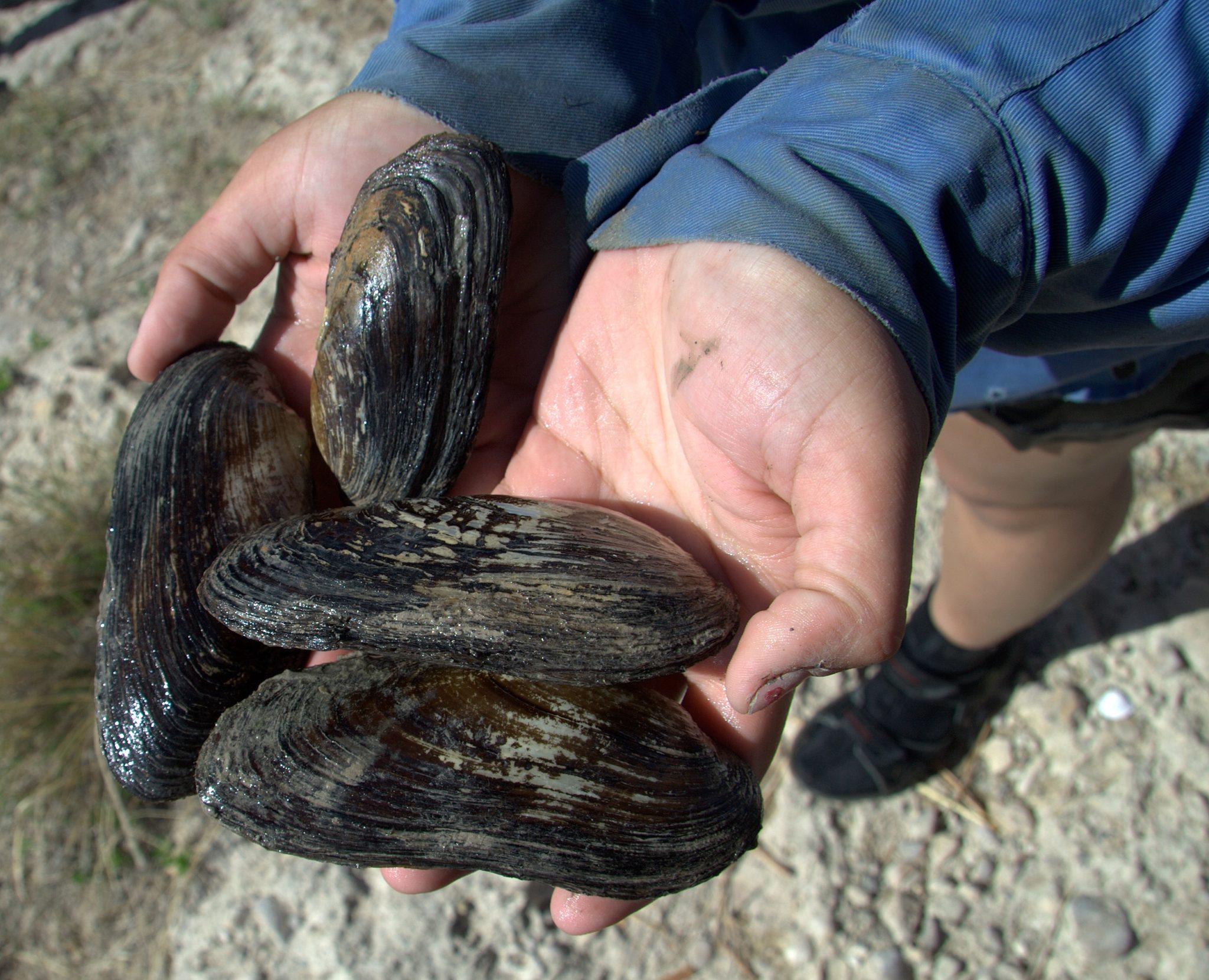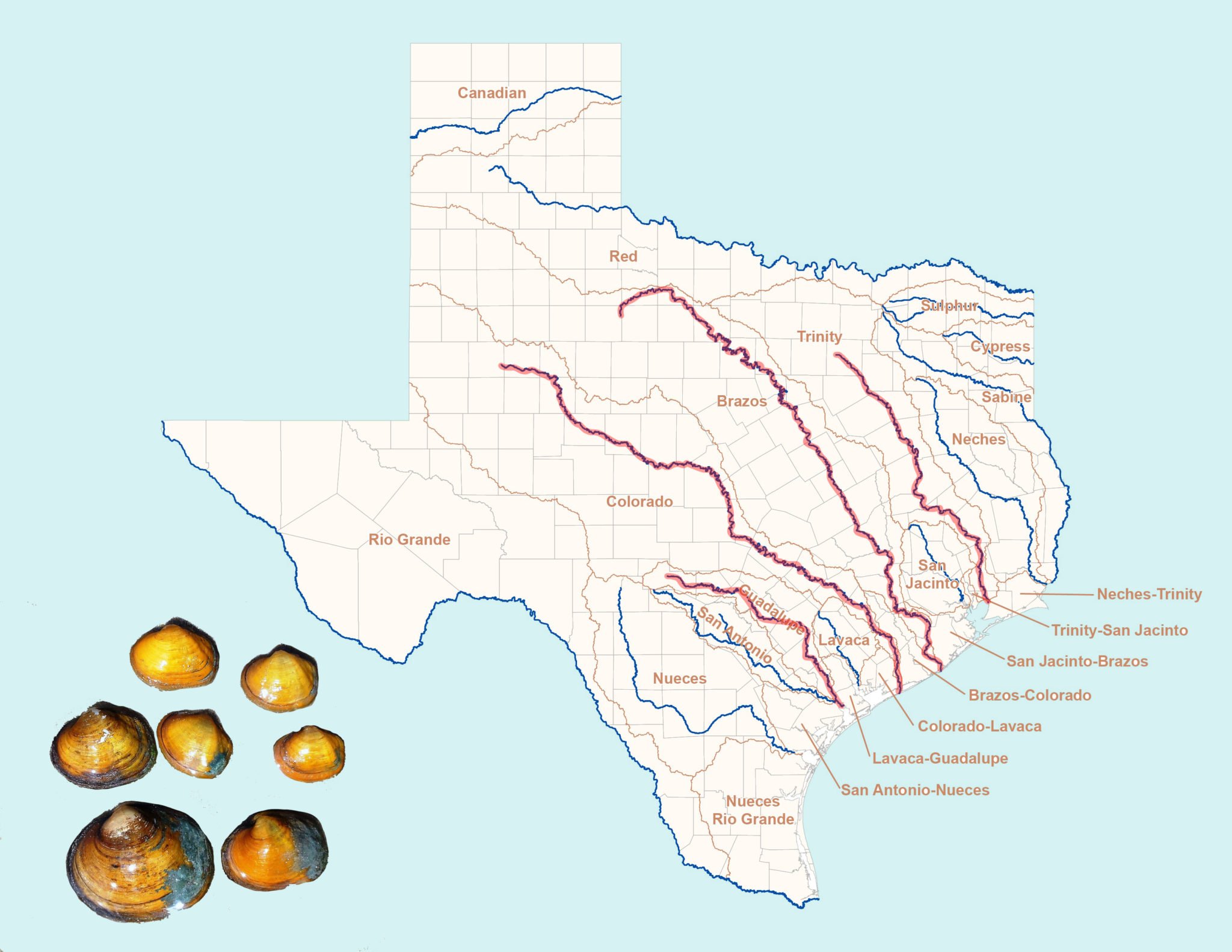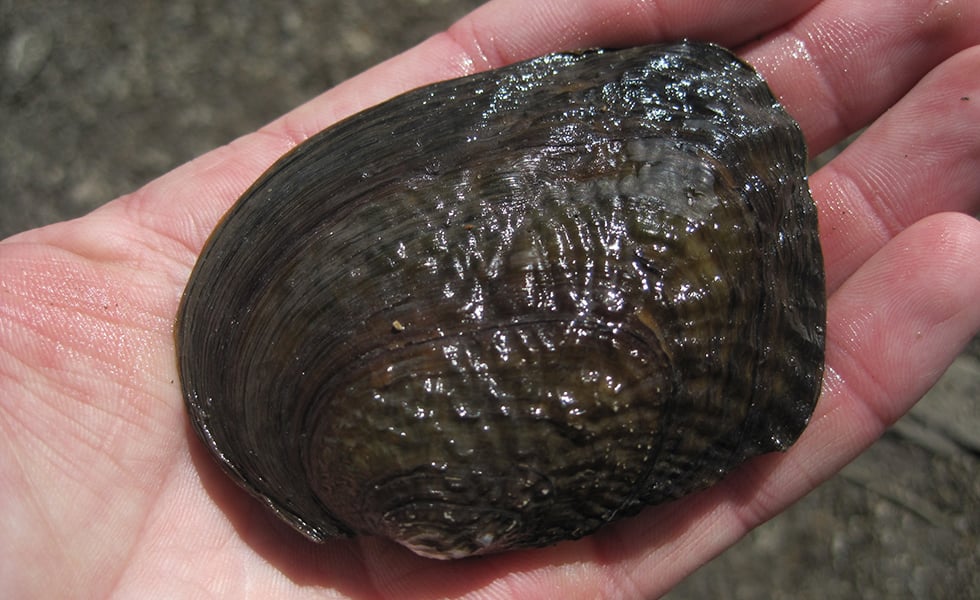
East Texas Rivers Could Become a Boiling Pot for Mussels
The humble bivalves may not look like much, but they act as crucial natural filters across the state's waterways—and they're severely threatened by climate change.

Where the Sabine River becomes shin-deep about 20 minutes north of Tyler, three biologists dismount midstream from a narrow metal boat. Lance Williams, a professor at the University of Texas at Tyler, has located the perfect spot for today’s hunt.
They’re looking for mussels, the unassuming, mostly stationary bivalves that call scores of Texas rivers and lakes home. Mussels clean the water by sucking up pollutants, and they’re an important food source for fish, birds, and other animals.
In just 20 minutes, the researchers have found a dozen mussel varieties with funny names: pistol grip, washboard, three-horn warty-back. After a quick examination to note their size and shape, the scientists carefully put the mussels back where they found them.
They don’t want to be too rough with the specimens, after all—mussels are perhaps the most vulnerable family of creatures in the entire country. About 70 percent of native freshwater mussels in the United States are in danger of extinction.
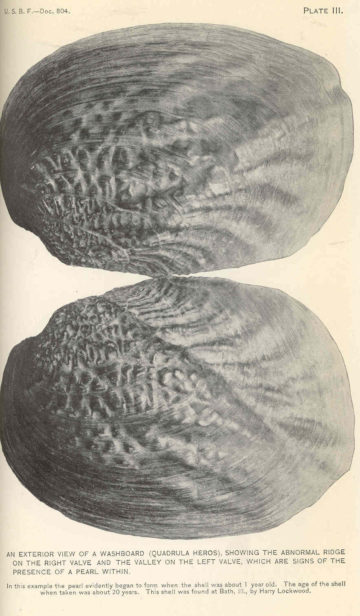
Williams says that in addition to dams and pollutant discharges into waterways, mussels face an existential threat: climate change. He and and his team at UT-Tyler are running tests to determine how warming temperatures in rivers and lakes will affect the critters. Inside a small room on campus are two large fish tanks. In one of them, researchers raised mussels in 86-degree water—the average temperature of the nearby Neches River during the summer months. In the other, scientists turned the dial to 95 degrees, the temperature the river could reach by the year 2050, thanks to climate change.
All the mussels in the 95-degree water died.
“It’s not gonna take much of a temperature increase during summertime, during a drought, for us to massively kill off freshwater mussels,” Williams said. “It’s very alarming.”
The demise of East Texas’ mussels could worsen the quality of drinking water in that part of the state, says Clint Robertson, a Texas Parks and Wildlife Department biologist who is considered the state’s foremost expert on freshwater mussels.
“Mussels are certainly an important component in the aquatic ecosystem,” Robertson said. “They’re filtering the water. So they’re the little water treatment plants of the rivers, essentially.”
A mussel bed about the size of two football fields can filter 10 million gallons of water a day and remove 10 tons of algae, bacteria, and other undesirables from water sources before they reach water treatment facilities.
“They’re actually cleaning the water for you for free,” Robertson said.
Just downstream, at the city of Longview’s water treatment plant on the Sabine River, it’s Sal Pisano’s job to catch whatever contaminants the mussels can’t hoover up.
“It’s not gonna take much of a temperature increase during summertime, during a drought, for us to massively kill off freshwater mussels. It’s very alarming.”
“It’s one of the dirtiest sources we have as far as the sediment. It’s constantly moving so it’s brown,” said Pisano, the plant’s manager.
Pisano said he and his staff test the treated river water daily to ensure its quality. He also keeps a lookout for spills and leaks from nearby petroleum operations.
Industrial agriculture is also a major polluter of East Texas waterways. For instance, poultry juggernaut Pilgrim’s Pride sent 1,700 pounds of nitrogen pollution into Lake O’ the Pines every day in 2017, according to a national environmental group. Near the UT researchers’ mussel spot on the Sabine, Sanderson Farms is discharging wastewater from its new slaughterhouse, pushing even more pollution into the river. That means more work for Pisano and the city of Longview.
“People’s health is involved in this, and if we do something wrong, you can make someone sick,” he said.
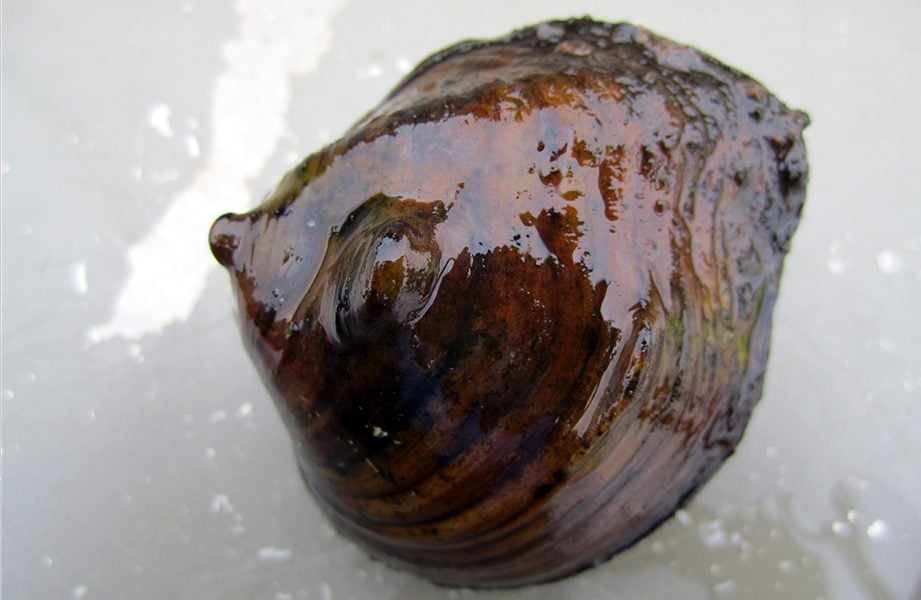
The increased pollution could be a double-whammy for river health, said Josh Banta, another UT-Tyler mussel researcher. He notes that anything beyond low levels of contamination will kill mussels.
Listing East Texas mussel species under the Endangered Species Act could curb some sources of pollution. Such a designation would allow the government to limit pollution in what’s known as the species’ “critical habitat,” said Tierra Curry, a senior scientist at the Center for Biological Diversity. She notes, however, that the Trump administration has made it even more difficult to get freshwater mussels and other threatened animals covered under the law.
“They’re not going to designate critical habitat for species that are threatened by climate change,” Curry said. “Scientists tell us more than a million species are facing extinction right now. … It’s the worst possible moment in history to make these changes to the act.”
But man-made problems have man-made solutions, after all. We can slow climate change by cutting emissions, and we can curb water pollution by limiting our use of pesticides and fertilizers, which inevitably run off into rivers and lakes. Curry said planting trees along the banks of streams and rivers could also soak up contaminants and lower water temperatures.
“People can start to feel like individuals can’t make a difference,” she said. “But at this point, everything we do matters. People shouldn’t give up. Hope is contagious.”
This story was produced and published with KUT/Texas Standard.
Read more from the Observer:
-
The Ghosts of Jefferson: This East Texas tourist town calls itself “the most haunted town in Texas,” but its whitewashed ghost stories elide a complex racial history.
-
Landowners Got One Hill Country Oil Pipeline Moved. But Can They Do It Again?: Rule No. 1 of averting pipeline routes: Always bring a high-powered, politically connected oil and gas executive to the negotiating table.
-
Up From the Desert: As a child, I hunted for fossils in the Chihuahuan Desert beyond my backyard. Those afternoons shaped the way I think about my fronteriza identity today.
